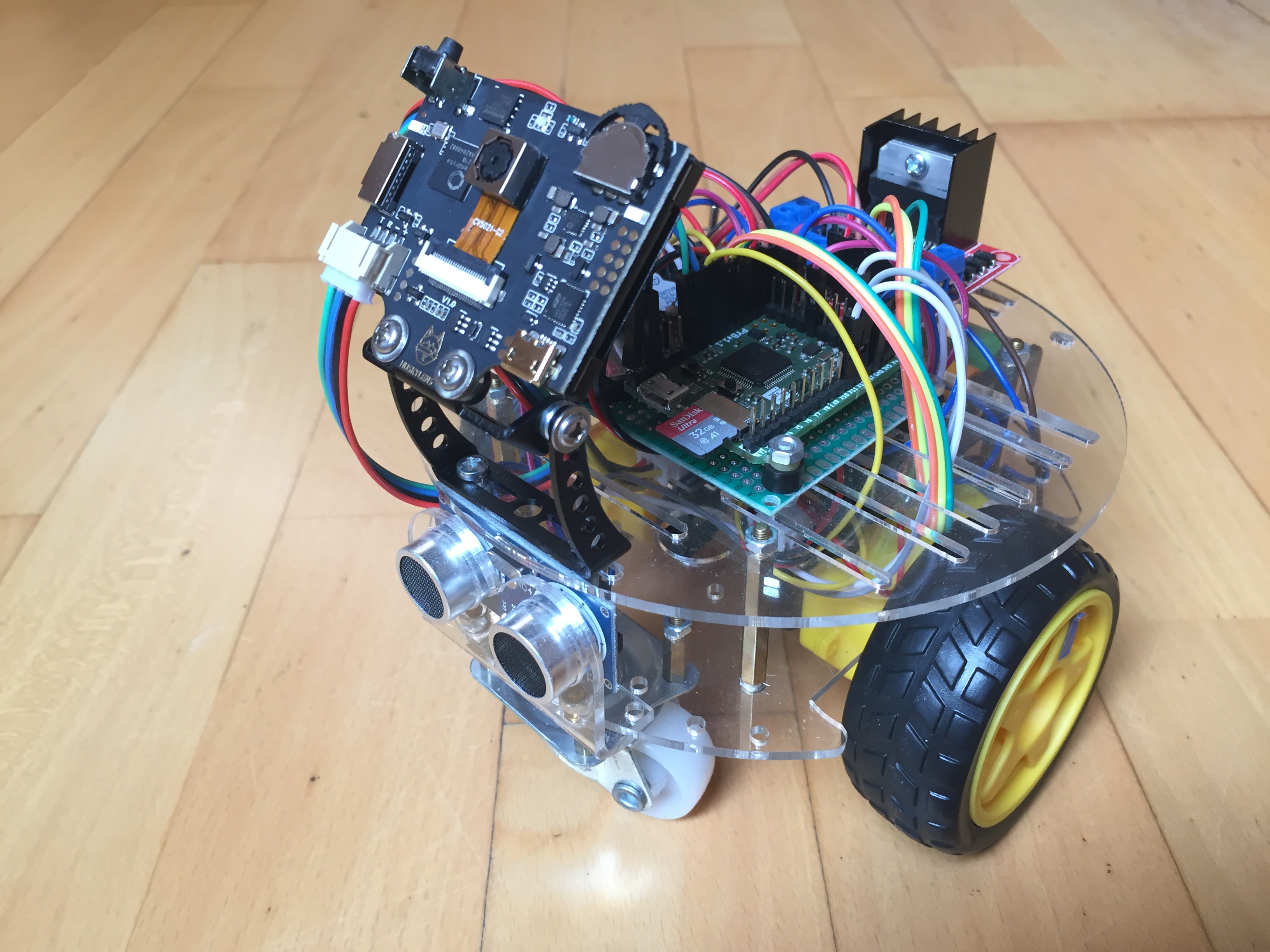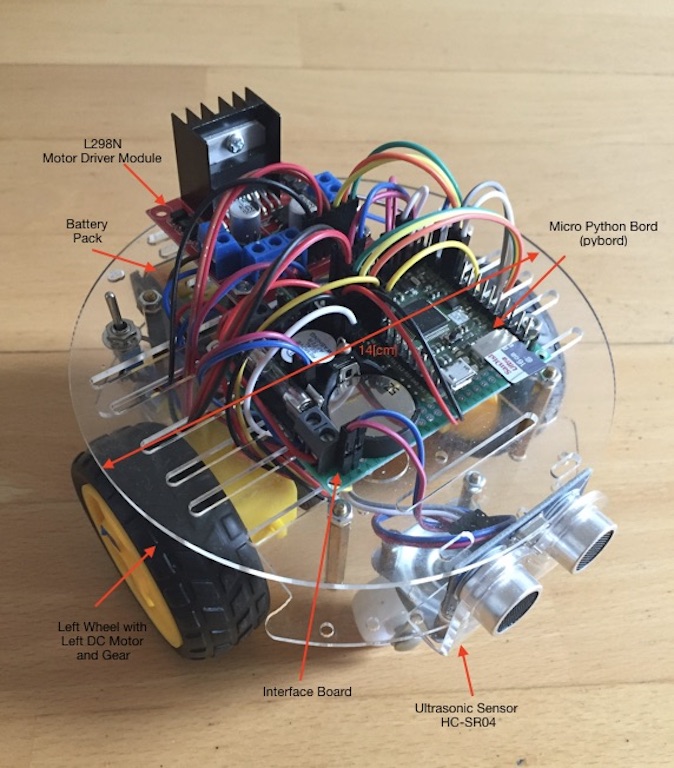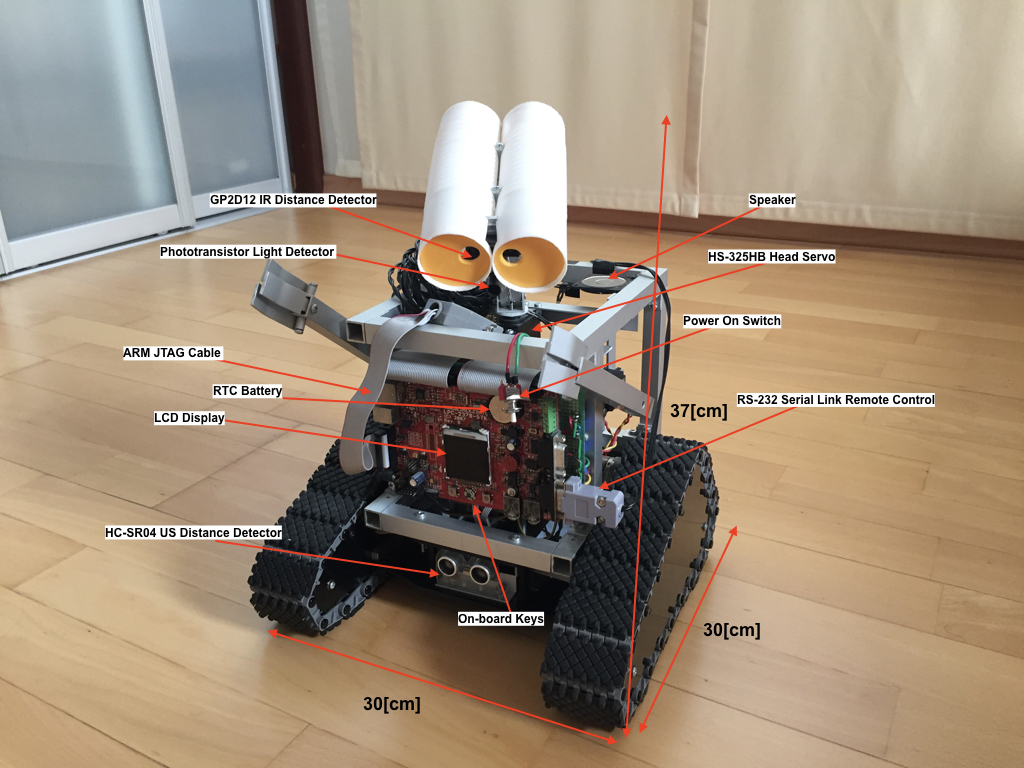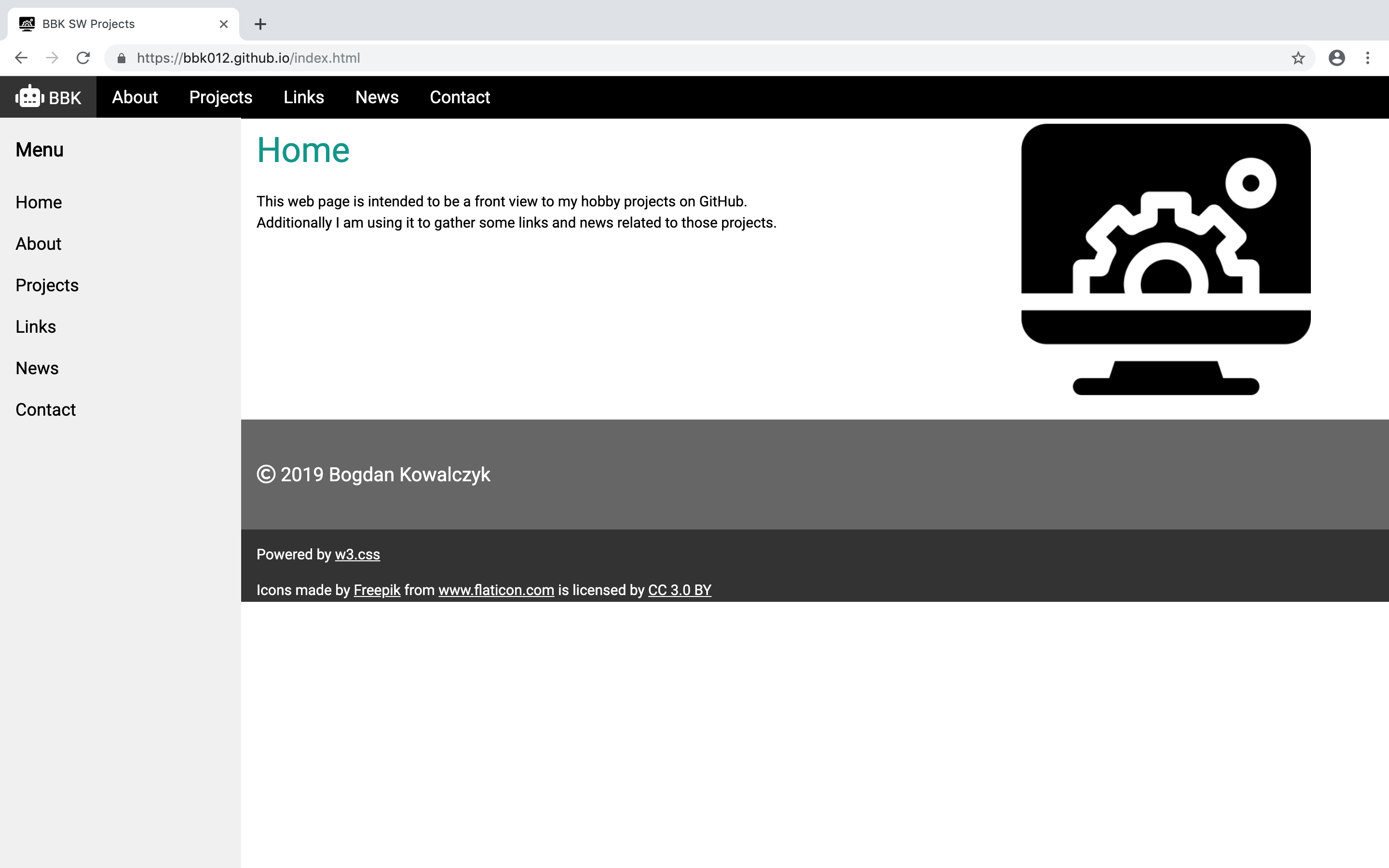Projects
This page provides a short introduction to my projects and leads to a more detailed description and links to the source code hosted on GitHub.
uPyBot with HuskyLens AI Camera
Looking for further extensions to the functionality of my uPyBot - the Micro Python controlled robot I decided to add to it a HuskyLens PRO AI camera.This way my uPyBot is able to recognize his daddy . It took me about 8 hours of work to study HuskyLens camera documentation, to integrate it to my uPyBoard, and to extend my original random walk program so my face is recognized by the robot. When it recognizes my face during his move forward it stops and starts his greeting move (five quick right-left turns with a beep) and next, continue his program until we meet again. More information you can find under this link.
uPyBot Micro Python Robot
I wanted to give try Micro Python - the Python 3 implementation which is capable to work on bare metal microcontrollers. During the 2019 Christmas break I assembled a small robot using off-the-shelf components (see the picture). This robot is controlled using Micro Python Board (named pyboard) and a small Python 3 program developed for it. I got something fully operational very quickly within 4 days (after about 20 hours of work mostly dedicated to assembly and components connection).
Micro Python is an awesome tool to attract young people/children into embedded systems and software development. Using Python 3 you can very quickly develop something working and controlled by a microcontroller. It brings all benefits of the great Python programming language into the microcontrollers and embedded systems world. It can also be used in my opinion by professionals in systems where real-time constraints are not extremely demanding. More information you can find under this link.
WALL·E Inspired Robot
I have been working on that project for 10 years, mainly on weekends when I found any free ones. In April 2008 I bought LPC2378 Development Board but decided to use it for robot development during a vacation in 2008 inspired by Pixar's computer-animated film. My motivation was to prove to myself that after years of management type of work I am still able to write software. I wanted also to inspire my two sons (11 and 7 years old at that time) towards embedded systems. This I failed - none of them has taken that path (at least up to now). Maybe I also wanted them to have a cool father(?) there are not too many fathers who build robots and WALL·E like in the particular. I stopped the work once I got my goals achieved (end of 2018) and when I decided to work upon something different.
There is always a problem to find a real application for a robot like this (I mean for the home toy type of robot). In my case I decided my WALL·E main purpose will be to get my wife out of the bath when she is there for too long at late night - quite a challenging and motivating task . More information you can find under this link.
BBK GitHub Web Page
I have been thinking to publish my Wall-e project on the Web for quite some time. There was always something that made me busy finally I decided to recall my HTML, CSS, and JavaScript knowledge to set up something. I had a quite long time break in Web-based technology so first I had to remind myself of those topics and also learn new ones (like responsive web design) because technology changed since I learned HTML the first time. There was a great source of the Web-related knowledge I used in the past (w3schools.com) which is also right now in quite impressive shape. Inspired by them and using their great templates I decided finally to develope a static web page on GitHub to have it as a front page to what I am doing there. More information you can find under this link.



